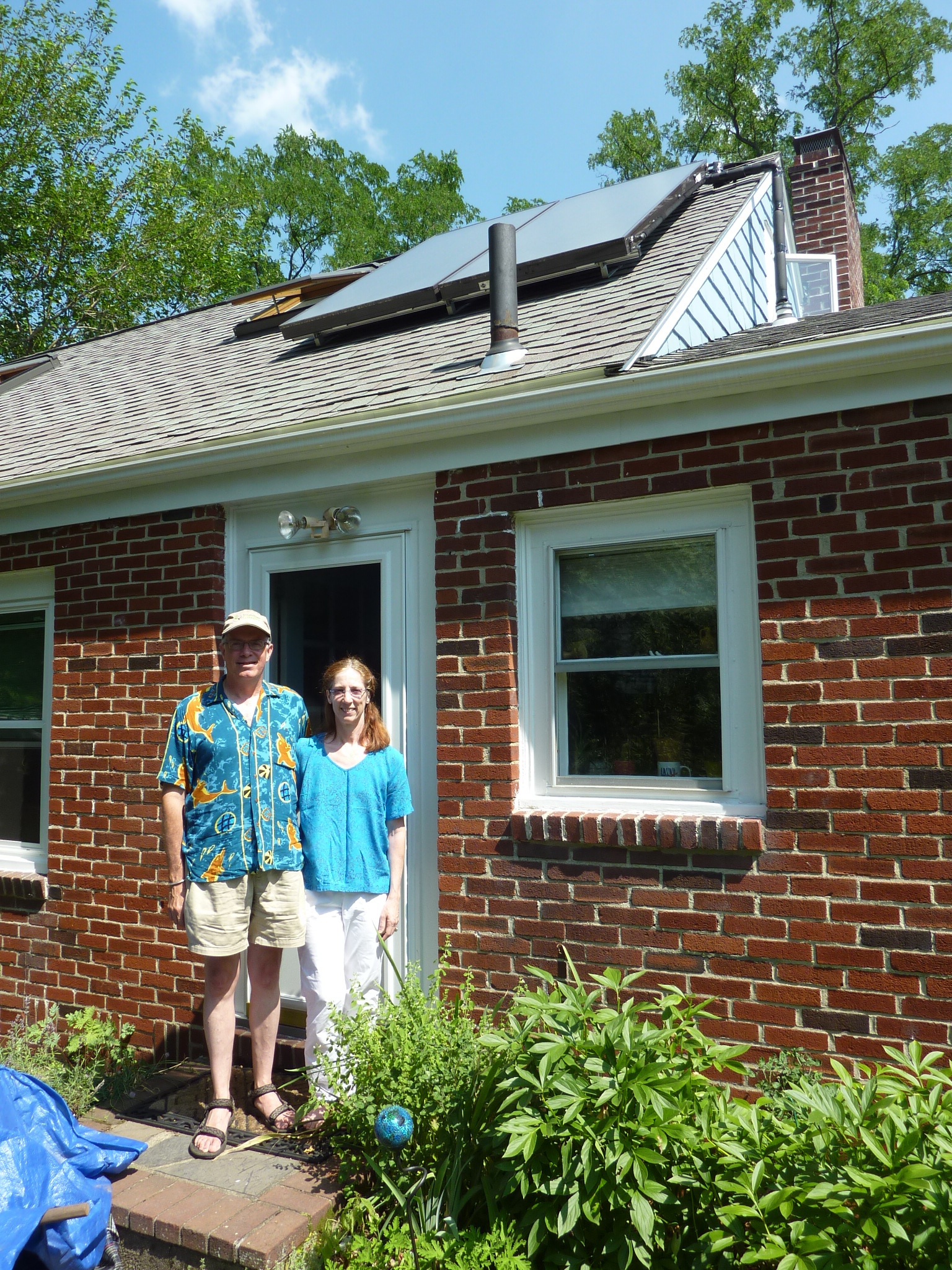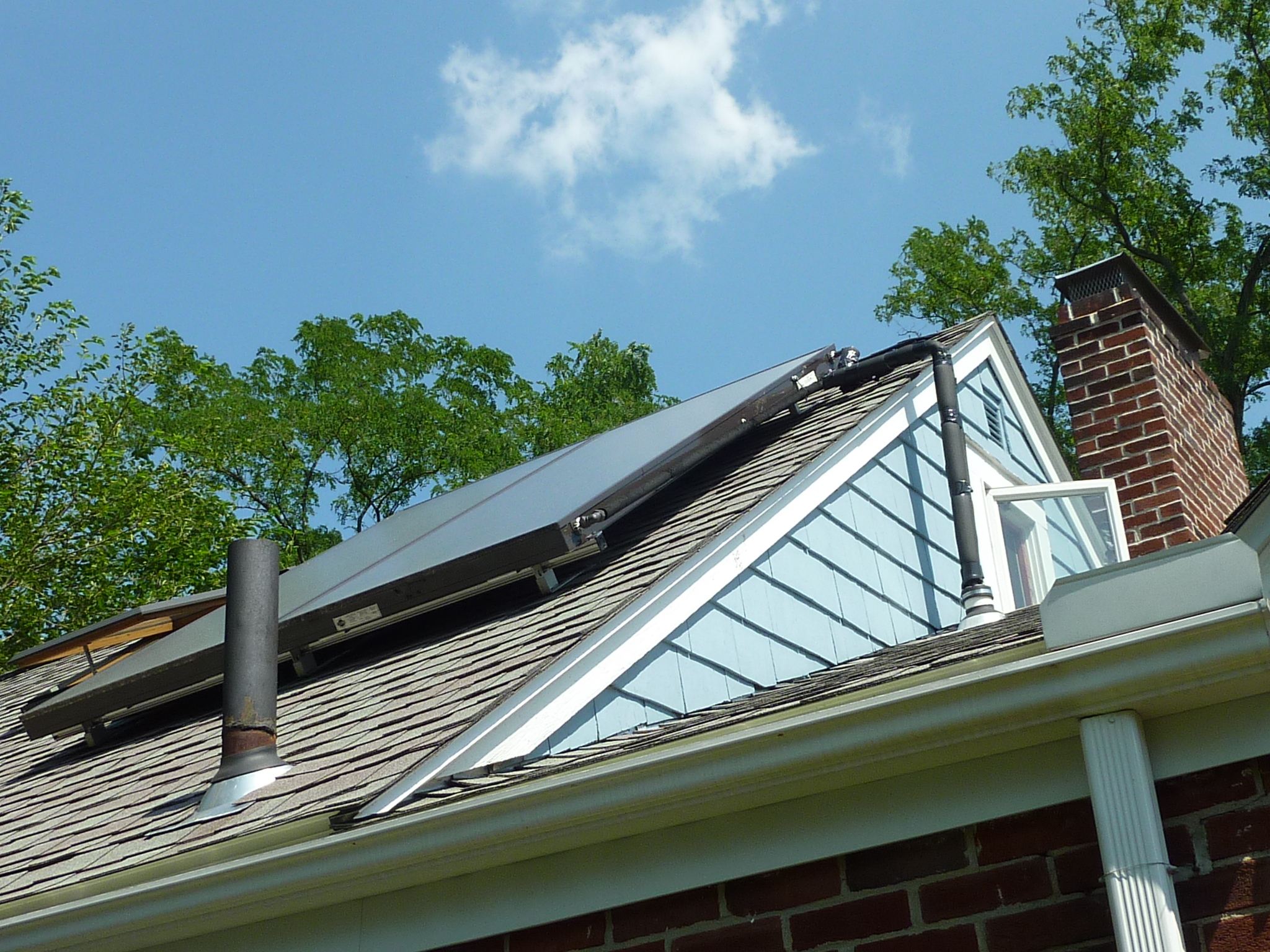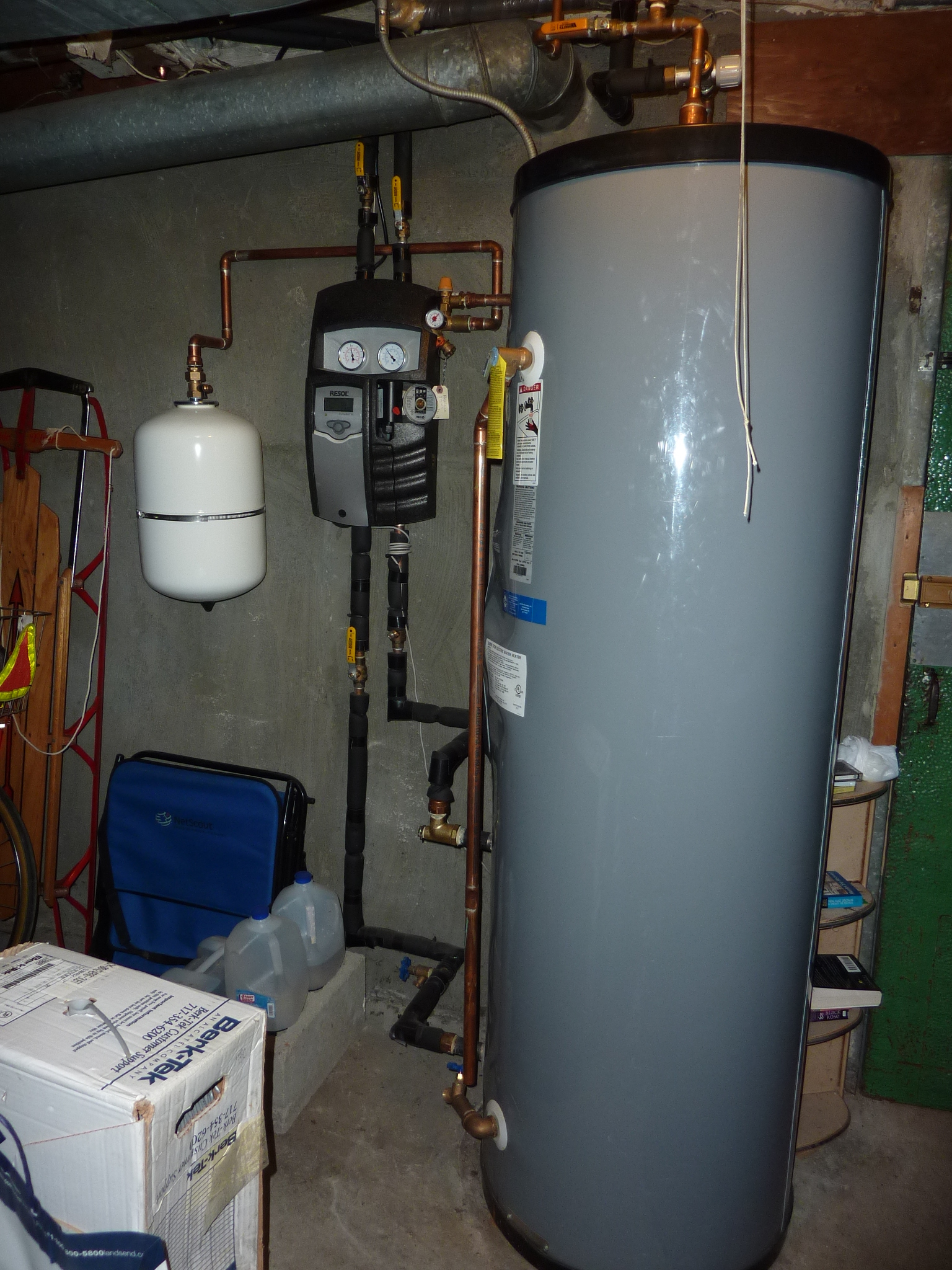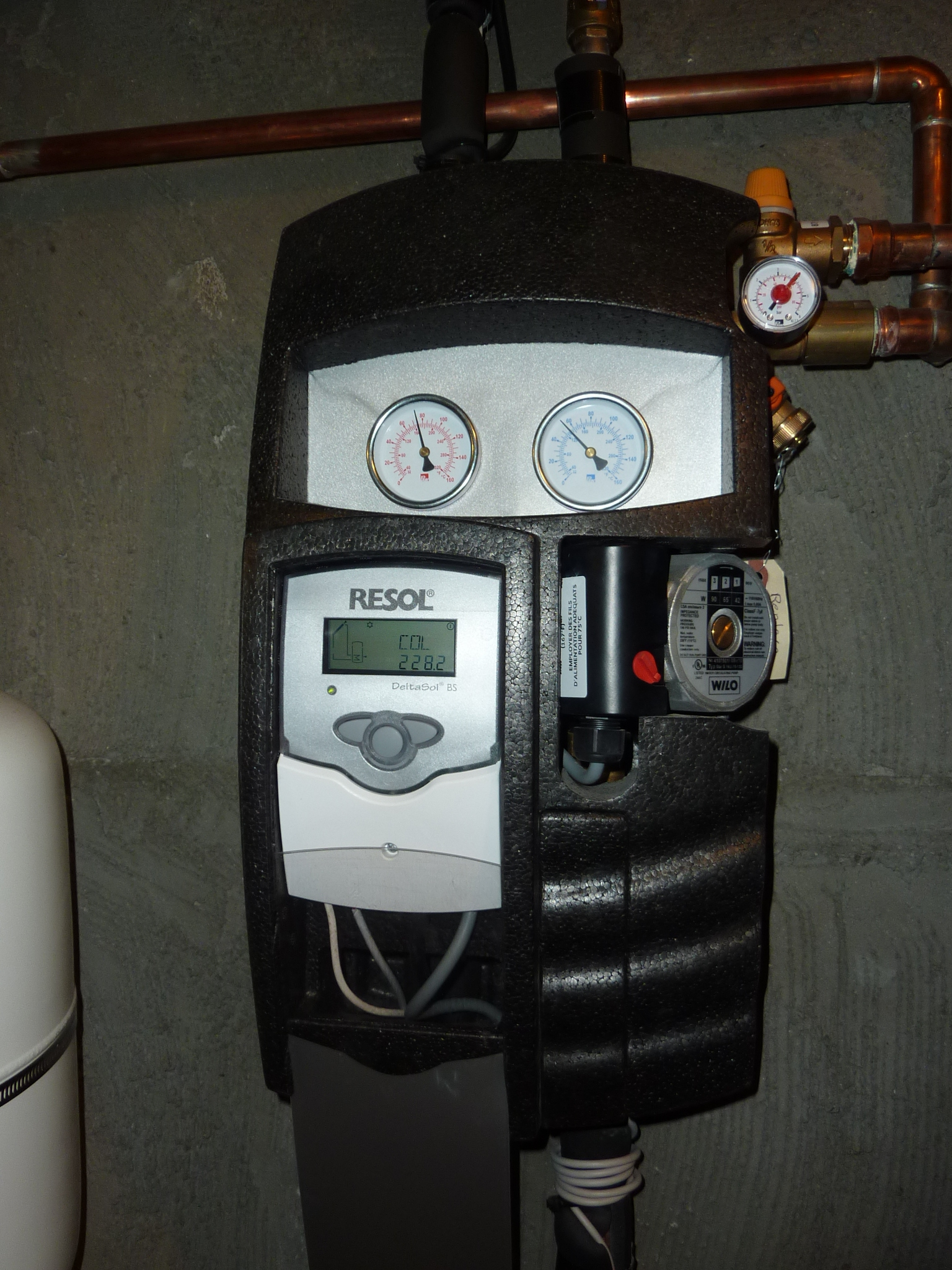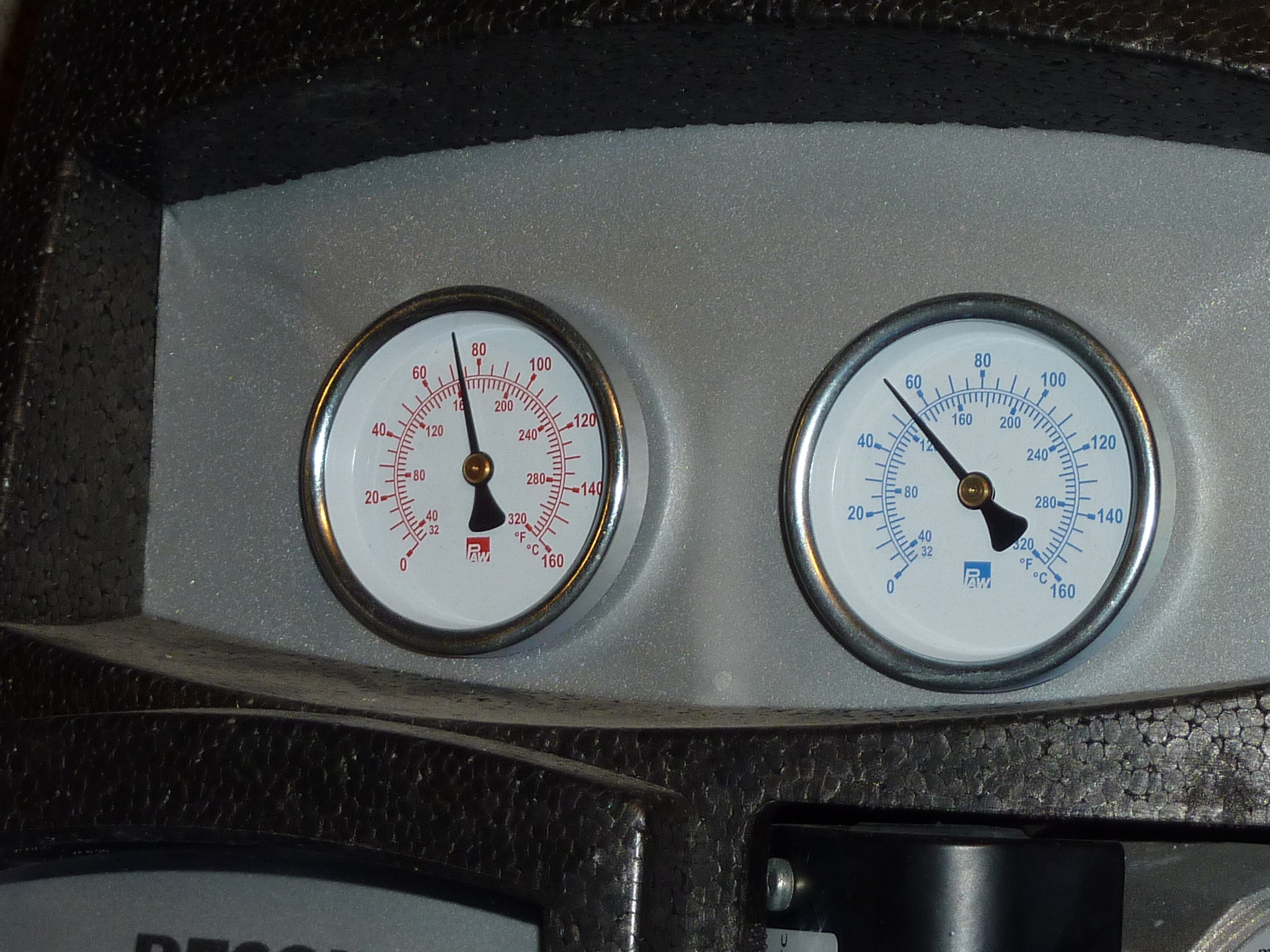Solar Hot Water in Arlington
/Solar Hot Water in Arlington
September 2011—When Arlington, Cambridge, and Medford participated in a three-town competition to reduce carbon emissions and energy consumption, Arlington residents Bill Thompson and Patti Muldoon took up the challenge. Boston Building Resources members since 1988, they were working on minimizing their environmental impact through weatherizing their home, carpooling, and eating locally produced food. But the biggest impact they achieved was through the installation of a solar hot water system for their home.
“For us, solar hot water was the perfect solution,” said Patti. “We had high electric bills, and we have the perfect roof for solar hot water.” Their roof faced due south and had recently been replaced, so would not need repairs in the near future. Because there is no gas service to their home, they had been heating their water with electricity, the least efficient method. Now, with their new system, they only need to supplement with electricity during the three or four coldest months each year.
A collector panel mounted on the roof of their home contains tubing for glycol (a fluid antifreeze) to pass through, where it is warmed by the sun. A pump then circulates the glycol to an 80-gallon, super-insulated water storage tank in the basement, and the heat is transferred to the water inside. When the temperature of the stored water dips below a programmed limit, the pump kicks in and the glycol begins to circulate, bringing down more heat from the roof and keeping the stored water ready for showers, dishwashing, etc. The system works regardless of the temperature outdoors, as long as the sun is shining.
The biggest challenge, said Bill, was finding a path to pipe the glycol down from the roof collector to the basement. Their small house had narrow spaces and the pipe needed to pass through several floors. Ultimately, the contractor found a path over the edge of the roof, down the exterior wall of the second floor, through a lower roof, and into the basement where a glycol storage tank sits next to the water storage tank and the pump. Two thermometers show the temperatures at the collector and in the storage tank.
Bill describes the upkeep of the system as “very modest,” and it was included in the original $8,000 cost. The installation took three days, and the couple expects to recoup their investment in six years. “Our energy bills have been cut in half,” said Patti. An interest-free loan from MassSave made it possible to finance the up-front cost of installation.
Having the support of a team in the three-town competition was very helpful, Patti said, because they could share tasks such as investigating potential contractors. “We were all interested in projects like solar hot water and we could all go forward together.”
Because every home has a unique set of circumstances, different renewable energy solutions will make sense in different situations. For Bill and Patti, solar hot water was an answer that will help them meet the challenges of energy costs and climate impact for many years to come.


